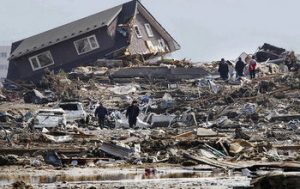|
Technology is fast changing and ever innovating. This is especially true in the modern, digital world we are living in now. Almost everywhere you look, technology dominates your surroundings and it even rules your life by feeding your smartphone and social media obsession. Almost all brands release new models every year and it is a major factor as to how often people replace their units even if their old one is still functional and has no issues at all. Among the leading tech brands in the world today is Apple. It is the smart technology innovator and the maker of the luxury smartphone brand, the iPhone, that is coveted by many.
Of course, the price is always a consideration when it comes to mind-blowing technology. After all, nothing comes for free or sells cheaply anymore unless it is outdated. And with the latest technology, it comes at a high price too. So, better prepare your wallet if you want to have a taste of what the new iPhone 8 has to offer. If you are someone with the cash to burn, feel free to make the upgrade today but don’t get tempted to spend all your life savings just because you want to stay on trend.
Animojis – perhaps will be the newest game-changer in the smartphone technology. As if the specs mentioned above aren’t enough to make you spend all your money on the latest iPhone model, this cute animated emojis are sure to liven up your messaging, chatting and SNS game. And since the majority of the population can’t live without social media, this is the perfect tool to help them convey those emotions they can’t easily express with written words. It won't be hard selling these to most Millennials, then. So, brace yourself for another powerful handheld device that is sure to blow you away as it promised and you won't even have to wait for long. The article Are You Ready For The New Apple iPhone? Find more on: SEMP.us Blog from https://www.semp.us/are-you-ready-for-the-new-apple-iphone/
0 Comments
Different nations have various means to make money and their geography often has a lot to do with this. If you live in flat lands that are perfect for farming, then it makes perfect sense to harness agriculture and teach the people to till and plant various crops instead. If you live in a coastal area, fishing is the ideal means of livelihood. But there are other parts of the world that are more beautiful than most places and is sought after by tourists every year. The Caribbean is one of those places that many consider as a paradise for many reasons and it is not hard to see why once you see pictures of its pristine beaches and crystal blue waters.
The storm hit at an especially bad time when the Caribbean is expecting an influx of guests in the coming months from those who want to escape the cold snowy months and frolic in the sand and beach instead. We are talking of billions of dollars of loss here, dead people and broken down properties. Tourism isn’t just possible at the moment and the worst is even expected because of an incoming hurricane that is said to hit the Caribbean just like Hurricane Irma did in the coming days.
(Via: http://www.travelweekly.co.uk/articles/287201/hurricane-irma-caribbean-tourism-recovery-fund-set-up) In a place like the Caribbean that mainly relies on tourism to make a living, it is but a must for them to move on from the damage caused by the hurricane. Fortunately, there are nonprofit groups that already offered help and support so that the island nation can stand on its own feet once more. The association of hotel owners partnered up with NGOs and it makes perfect sense as they will all benefit once the Caribbean tourism industry picks up once more in the near future. How Hurricane Irma Hurts The Caribbean Tourism was initially published on https://www.semp.us/ from https://www.semp.us/how-hurricane-irma-hurts-the-caribbean-tourism/ The whole world is aware of the various calamities striking different parts of the planet in rapid succession that charities are starting to get overwhelmed by the number of people that still needs help and their dwindling resources. From hurricanes to earthquakes, not to mention the political strife engulfing many nations, many innocent people are desperate for attention and help but only a few respond to their needs. Aside from various government agencies, charities are among the first to offer support to affected localities and families.
(Via: http://www.cbc.ca/news/canada/manitoba/natural-disasters-donor-fatigue-1.4301467) Donors to charities can only give so much and with consecutive disasters requiring extensive help and support, many charitable organizations can only do so much as they are already stretching themselves too thin and are now worried how to respond to more calamities that may still hit the planet before the year ends. Even wealthy nations like the US still suffer in the midst and wake of natural calamities and neighboring states of affected areas also feel the extent of the damage.
(Via: http://wkrg.com/2017/08/30/scambuster-bogus-charities-pop-up-after-natural-disasters/) And as if the damage incurred by these disasters aren’t enough yet, scammers take advantage of the situation and pose themselves as charitable institutions asking for donations that will never get to the intended recipients. It is not new anymore but still many ends up as victims and this practice has likewise tarnished the reputation and good intentions of legitimate charitable organizations and institutions that have really dedicated themselves to the service of all unfortunate victims of disasters both natural and man-made. All these things have made it difficult for charities now to mobilize and respond to disasters because funds are fast depleting and even the volunteers themselves are worn out from addressing one catastrophe to the other. While they voice out such issues, it still does not discourage them to act as soon as they can once disaster strikes and are still fervently asking everyone to pitch in and donate in whatever way they can to help everyone affected recover and move on from the tragedy they’ve just gone through. Charities Struggle Over Consecutive Disasters was first seen on https://www.semp.us/ from https://www.semp.us/charities-struggle-over-consecutive-disasters/ Business is a major driver of the world economy. It is basically what makes the world go round today. After all, we are living in a capitalist world that feeds on consumer wants and demands. But with how swiftly technology is advancing right now, businesses have a hard time keeping up. Some who don’t manage to adapt to all these changes fade into oblivion and replaced by new startups that know the name of the game today and how it is played.
(Via: https://arstechnica.com/information-technology/2017/09/digital-transformation-1/) Machine learning is especially helpful now that businesses are taking their companies to the global platform and it definitely helps with efficiency too. It’s especially helpful in tasks that can be automated so that consumers no longer have to spend a great deal of time just to get a simple request done. It is still a work in progress, though, but there is a big possibility it will be our reality in the next few decades since there are continued developments involving artificial intelligence.
It is not impossible for artificial intelligence to be used by the public in their everyday lives if the rate of tech progress keeps up. And with the way things are going now, it is bound to happen sooner rather than later. Global brands like Amazon and Netflix are already using it as well as smaller businesses in the tech niche have adopted a similar technology. With its help, transactions will speed up and much can be achieved in the shortest time possible without relying on human help to get things done, unlike how most things are still being done today. It may sound too geeky yet as of the moment but that’s how most great discoveries begin, from a radical concept that has forever changed the way we live our lives. The blog post Machine Learning: Are Businesses Ready For It? is courtesy of Semp.us from https://www.semp.us/machine-learning-are-businesses-ready-for-it/ Mother Nature is acting up and millions are affected and displaced once it strikes. From destructive hurricanes to powerful earthquakes that take everyone by surprise, people’s lives are lost, homes are destroyed, livestock and livelihood, etc. all gone in a snap. Perhaps it is her way of reminding us who is the boss and that we should pay for all the abuse we are doing to many of the world’s natural resources. These calamities are even intensified by climate change and global warming that is the reality of our day today.
(Via: https://www.marketplace.org/2017/09/20/life/puerto-rico-hurricane-maria-medical-aid-disaster) Each year, countless disasters strike various parts of the globe and we can only pray that it won’t be as destructive as the last one but no, it only gets worse and worse as the years go by. We can’t really tell for sure if climate change has to do with it but many are leaning toward that theory. It’s the reason why organizations both global and local that are involved in disaster relief and rescue and in the rehabilitation as well work hand in hand all-year round to ensure they are always ready to answer the cry for help of any place that has been struck by disaster.
This is an example of how organizations respond to disasters. Aside from using up their funds that have also been donated to them by various sponsors, they also ask those who are unaffected by the calamity to pitch in and help in whatever way they can. These organizations also send people on the frontline to offer physical support especially in dispensing basic needs and medical services and that is a risk they willingly take because of their desire to help and save the lives of other people. Through their intervention, the mobility of donations become faster and help gets to the people in need even without the assistance of the government or the local authorities. Without them, disaster relief will take far longer and people will suffer and even die especially in disasters with extensive damages. Organizations Brace Themselves In The Face Of Major Calamities is available on SEMP Blog from https://www.semp.us/organizations-brace-themselves-in-the-face-of-major-calamities/ Our health is so precious to us yet not everyone takes good care of it especially when you are still young. There is this misconception that being young means being free to do anything, even the ones that are bad for our health like engaging in dangerous vices such as illegal drugs, smoking, alcohol, and other forms of addiction. But as we age, we start to develop more debilitating conditions as our bodies degenerate. Yet the majority do not expect to get sick while they are still young. However, there is one condition that affects people regardless of their age – cancer.
Roughly 13,000 women are diagnosed with cervical cancer alone each year in America alone and about 4,000 dies as the disease advances and prompt treatment was not given when they still had the time. A woman’s life is saved with early cervical cancer screening and it has proven to be a success as to how dramatically the mortality rate to this condition has gone down over the years.
You do not have to die even if you are diagnosed with cancer. Once you hit your 30s, women should make it a point to get Pap test at least every 3 years unless experiencing any related symptoms that will require them to get it annually. With the technology we have today, you can explore various options and not just go the old route. And because of our increasingly modern lifestyle that favors junks, technology, and chronic lack of sleep and physical activity, developing cancer is more common now unlike in previous years. So, do not miss out on that screening test if you are a woman over thirty in order to avoid having health issues like cervical cancer that is the stuff of nightmares but is apparently avoidable when detected early on. Why Women Need To Get Screened For Cervical Cancer was first seen on The SEMP Blog from https://www.semp.us/why-women-need-to-get-screened-for-cervical-cancer/ Clean air is life. Medicine has taught us so much about it. Remember the ABC’s of basic life support. When faced with a medical emergency, check the ABCs first before doing any life-saving measures where A stands for airway, B for breathing and C for circulation. A few minutes without air and your brain loses oxygen that is essential for living. You will soon be declared brain dead and you might go into a coma. That is just how crucial air is in living.
California is home to the worst air pollution in the US and factors like spikes in particulate matters were all taken into consideration before declaring Bakersfield, California the grand winner in all of America. And it is an award they can’t be proud of. Imagine living in this smog-filled city and inhaling this toxic air on a daily basis.
(Via: http://www.latimes.com/opinion/editorials/la-ed-transportation-funding-bill-20170406-story.html) California is trying its best to enforce reforms and improve the air quality in the state. The health of the people and the state’s image has been suffering for years but little by little, they are making progress for the better. Yet despite the progress California has made in improving air quality in this part of America, they still continue to face major obstacles, especially that major budget cuts imposed by the Trump administration include the US Environmental Protection Agency. The state will have a hard time pushing for positive reforms without enough support and funding from the federal government but we can expect the sunny state of California will find a way to improve living and health conditions in the state at all cost. The blog post Clean Air Issues In The West Coast was originally seen on The SEMP.us Blog from https://www.semp.us/clean-air-issues-in-the-west-coast/ Education is the greatest gift a person can have. It is something that will last them a lifetime and can never be taken away from them (quite literally). Parents themselves sacrifice a great deal in order to give their children a good education. However, many are starting to notice how the quality of education the American youth gets, continue to deteriorate alongside the continued advancements in modern technology. Not only that, the education department is losing important federal budget funding from the current administration. It’s a big blow to both the educators and the students considering how expensive getting an education in the US has become.
Progressive nations place a high value on education because only then can we produce smart, skilled, and highly-competitive workers. And they know just what a big factor a teacher is in the equation. Teachers get higher salaries and better benefits, and as such, they deliver quality teaching to meet their student’s needs. Until today, the US still lags in investing heavily in early childhood programs, taking for granted the chance to harness the potential of a child if they are taught early in life.
(Via: https://www.theatlantic.com/magazine/archive/2017/10/the-war-on-public-schools/537903/) The education system has long been politicized. Politics has a lot to do with the way the current US education system works the way it does now. It seems that most of us, both public officials and private citizens, have forgotten why we study in the first place. It is not just for our own personal vested interests (although that is a big factor) but in the building, shaping, and running of a society – the US of A – in this case, as our civic and moral responsibility to the state. The youth is the future of any nation. The teachers ensure these young kids learn everything they need to prepare them in the future. But everything is so messed up right now that everybody is pointing fingers and blaming someone else for the many problems schools face now. It’s made even more complex with a leadership that also fails to recognize the importance of education in building a nation yet promises to make America Great again. American Education Is Deteriorating Find more on: The SEMP.us Blog from https://www.semp.us/american-education-is-deteriorating/ Children are precious gems in the eyes of their parents. From the moment of conception until their adult years, their parents will never cease to see their kids differently even if they themselves bear children of their own. But if there is one big struggle in rearing kids, it has to do with childcare. In the US, childcare is expensive and not all couples can afford to pay for it. The problem is that both couples need to work at least two jobs to be able to live comfortably and pay for childcare without experiencing any problem at all.
Childhood is a fundamental period in a child’s life. At this stage in life, everything is new to them and they have a lot of questions that need immediate answers. They won’t hesitate to try new things to satisfy their curiosity that may often lead to injuries or accidents when not attended. It is why childcare is crucial to their normal growth and development. They no longer have their parents to take care of them, so a surrogate parent in the form of a daycare worker or a childcare provider makes a lot of difference to how these young children turn out to be.
A parent spends almost 2/3 of his/her income on childcare alone. That leaves little money for other life expenses. If you are also paying for mortgage/ rent, food expenses, utilities, and transportation, then what’s left won’t be enough to cover all. That’s when you can say that the struggle is real in being a parent. If you stop working to take care of your kid, you will lose your income. If you work, you won’t earn enough to pay for all your obligations. There doesn’t seem to be a one-size solution that addresses the problem for good. Affordable childcare should be included in the program of the government to help parents take care of their children without sacrificing the safety and well-being of the youngsters. Not only do the kids suffer in the absence of affordable childcare programs but the parents’ emotional well-being too that results to a “happiness gap” in most developed countries like America where leaders often talk about family values but seldom do something about it. Making Childcare Accessible For All Read more on: SEMP Blog from https://www.semp.us/making-childcare-accessible-for-all/ Transportation is crucial to get us from one place to another. By nature, humans are social animals. We thrive in the company of other people and we enjoy exploring outside of our comfort zone. The world is a big space that we can never fully explore unless we take travel seriously. Unfortunately, traveling requires money – lots of it. So unless you have it, there go your travel goals down the drain.
Like with anything that is being automated these days, the government is now considering automating trucks to lower emissions, save money, and reduce the occurrence of road accidents. If there is any drawback to it, it has to do with the job losses that this massive automation will result to.
They’re not just thinking of driverless trucks but driverless cars in general. And it is already happening around us with Tesla’s Autopilot and Uber’s self-riding cars when carting passengers. Many other bigger tech and automobile companies are all developing their own version of self-driving cars too as of the moment and it won’t be long enough when these driverless vehicles take to the streets without the law requiring a human operator to drive them. Issues arising from this drastic change in our way of life will largely impact truck drivers or drivers in general for they will lose their jobs when cars no longer need people to drive it in order to run. The government has to look in closely how it will change the lives of the people and that of society, so that no one will be displaced and that alternate work opportunities will be provided to everyone affected. The article Is It Possible To Have Driverless Trucks? was initially published to https://www.semp.us/ from https://www.semp.us/is-it-possible-to-have-driverless-trucks/ |
About usEvidence based disaster management. ArchivesNo Archives Categories |










 RSS Feed
RSS Feed
